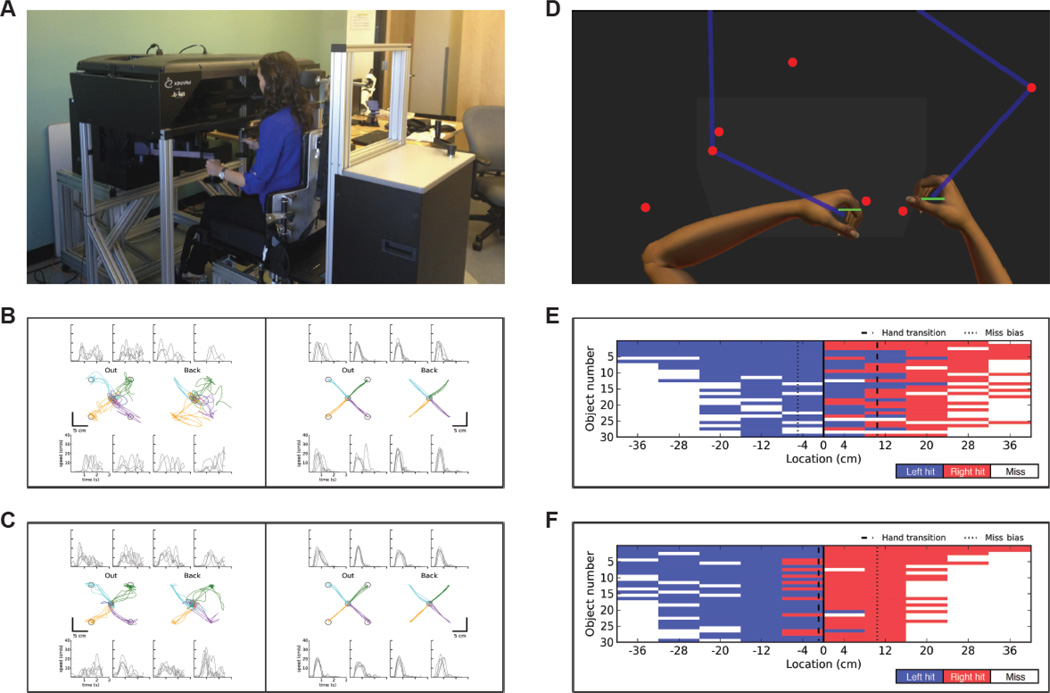Figure 2.
Robotic Assessment. A, Individual seated at the KINARM End-Point Lab (BKIN Technologies, Kingston, Ontario, Canada). While sitting in a modified wheelchair base that can be raised and lowered with a hydraulic system, participants grasp two handles linked to robotic motors that can apply loads to either hand. Small discs are mounted underneath each handle to provide the hands with gravitational support. A video monitor and semitransparent mirror located above the hands are used to project visual targets onto the same plane as the hands. B,C, Hand paths and hand-speed profiles of Participant 5 during performance of the visually guided reaching task with the affected left hand (left half) and less affected right hand (right half) at Pre-test (B) and Post-test (C). Hand paths (center row) depict each reaching movements from the central target out to the four peripheral targets (first and third plots) and from the peripheral targets back to the central target (second and fourth plots). The hand-speed profiles (top and bottom rows) correspond to reaching movements to and from the closest peripheral target in each plot. Each line on the graph represents a single trial. D, Overhead reproduction of Participant 2 (right upper extremity affected) performing the object hit task. Participants use paddles (5 cm) attached to each hand to hit away as many balls as possible as they move towards them from the top of the screen. E, F, Performance of Participant 2 on the object hit task at Pre-test (E) and Post-test (F). Balls move along 10 vertical paths (columns) with 30 balls (rows) in each path for a total of 300 balls. Blue areas represent hits with the left hand (less affected) and red areas represent hits with the right hand (affected). White areas represent misses. At Pre-test, Participant 2 frequently uses her left hand to hit balls on the right side of the screen (E), whereas hand and use is more symmetrical at Post-test (F). This is shown measured by the hand transition parameter (dashed line), which is on the right during the Pre-test and relatively central during the Post-test.

